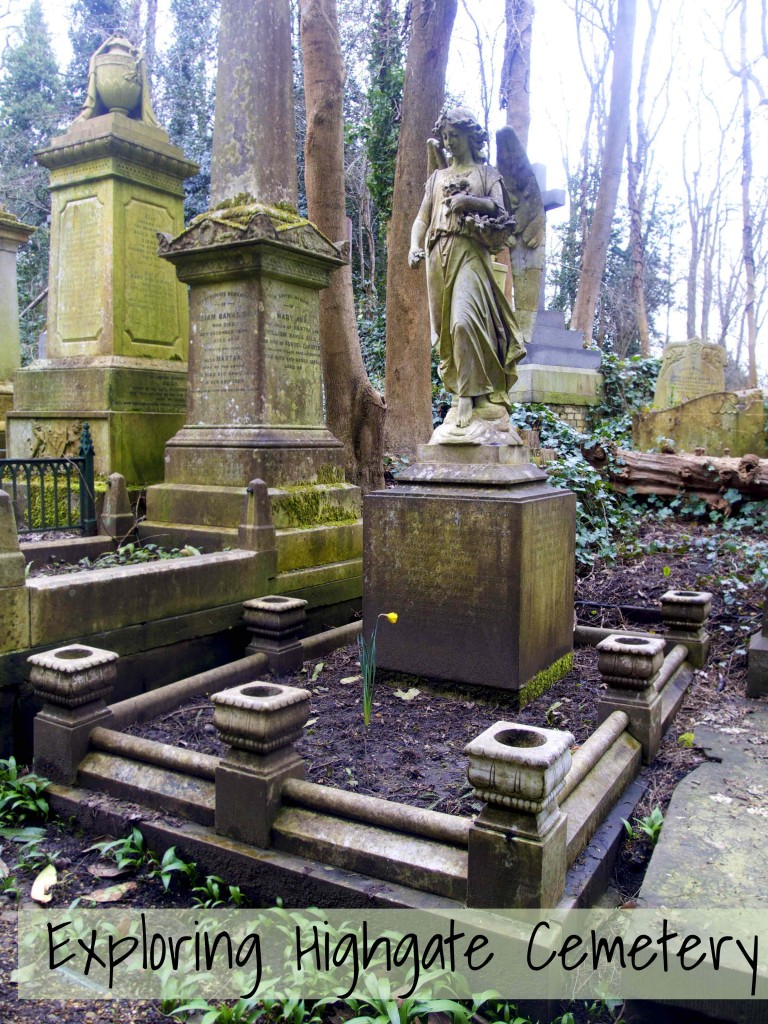
We crept under the trees, our voices hushed. The angels gazed down reprovingly, as if to question why we disturbed the peace. Later, as we relaxed, I noticed a jackdaw flitting through the headstones, a cat winding its way along the small paths. Suddenly Highgate Cemetery seemed not just a resting place, but a celebration of life.
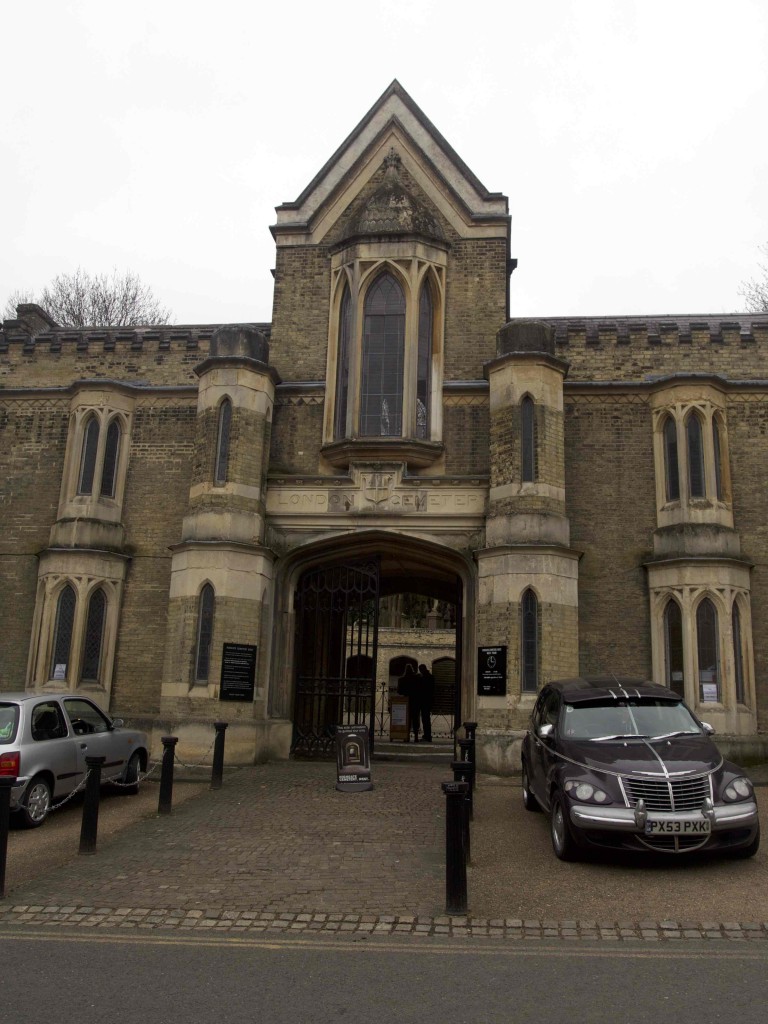
The imposing entrance to the West Cemetery
In the nineteenth century, London had a big, smelly problem – there was not enough room to bury all the dead. Church graveyards were packed, and burials were even conducted in unconsecrated ground. To solve this, seven large new private cemeteries were established, of which Highgate is the most famous. Opened in 1839, it quickly became a fashionable spot to be buried thanks to its quiet wooded pathways and views over London and its surrounds. By 1860 there were over 10,000 graves in the Cemetery, and additional land was purchased across the lane, splitting it into the original West Cemetery and the newer East Cemetery. Its ostentatious graves and catacombs matched the Victorian fashion for symbolism and gothic splendour. However, by the turn of the century Highgate was going into decline, and in 1975 it was officially closed. Shortly after, the Friends of Highgate Cemetery formed to restore it to its former glory. Today, anyone is able to access the East Cemetery, and tours are available of the West Cemetery. We were guided around for over an hour by Sam, who was extremely knowledgeable and passionate about the cemetery’s history and future.
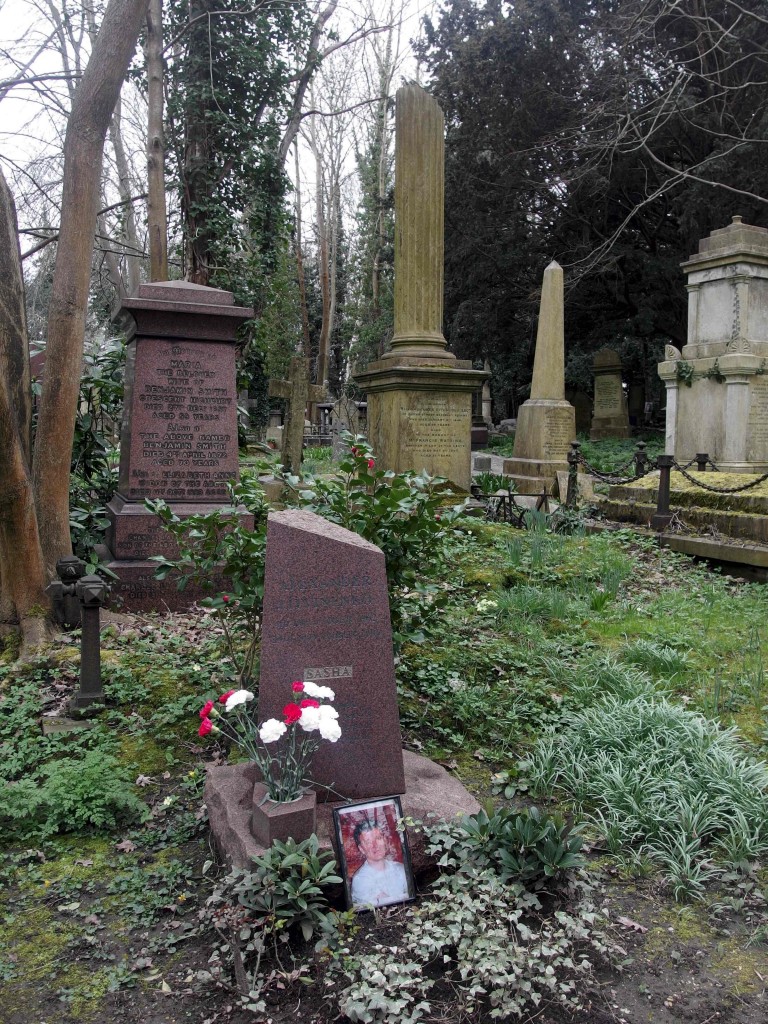
Burials still take place in the cemetery today, and almost straight away we saw one of Highgate’s newer residents, Alexander Litvinenko the Russian dissident. After dying of polonium poisoning, he was buried in a secure coffin to prevent radiation leaking into the cemetery. His headstone is a modern broken column, representing a life cut short, and a classic example of this is also visible behind his grave in the picture above.
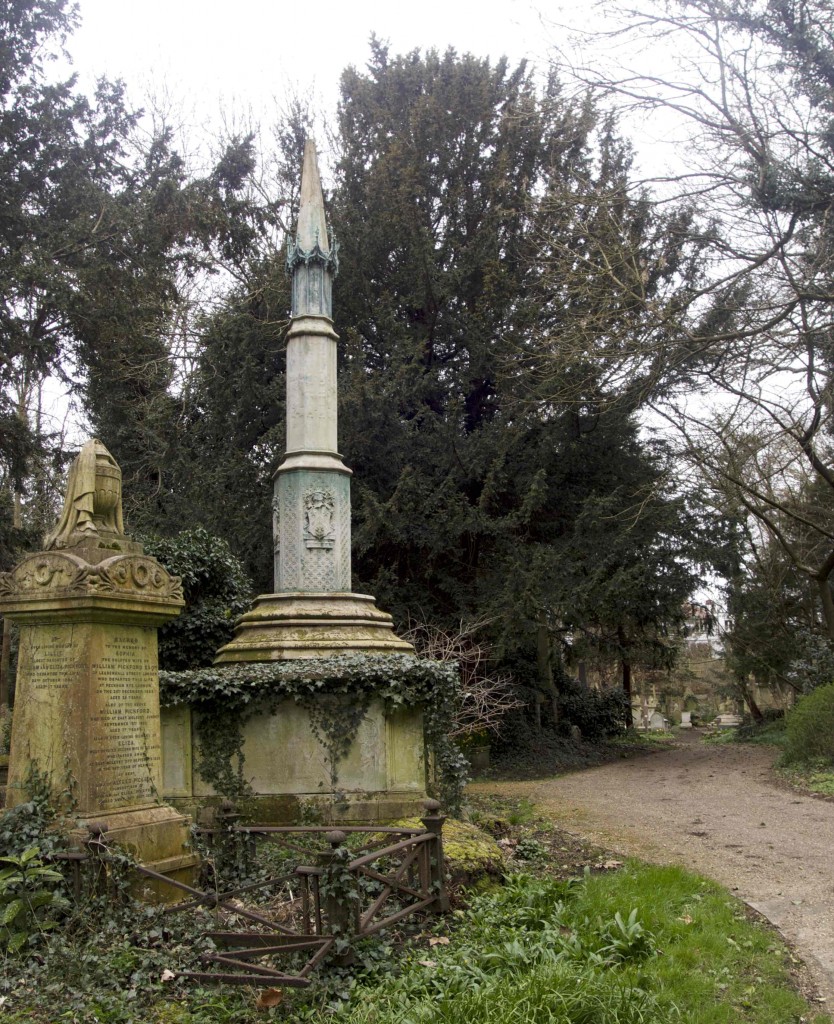
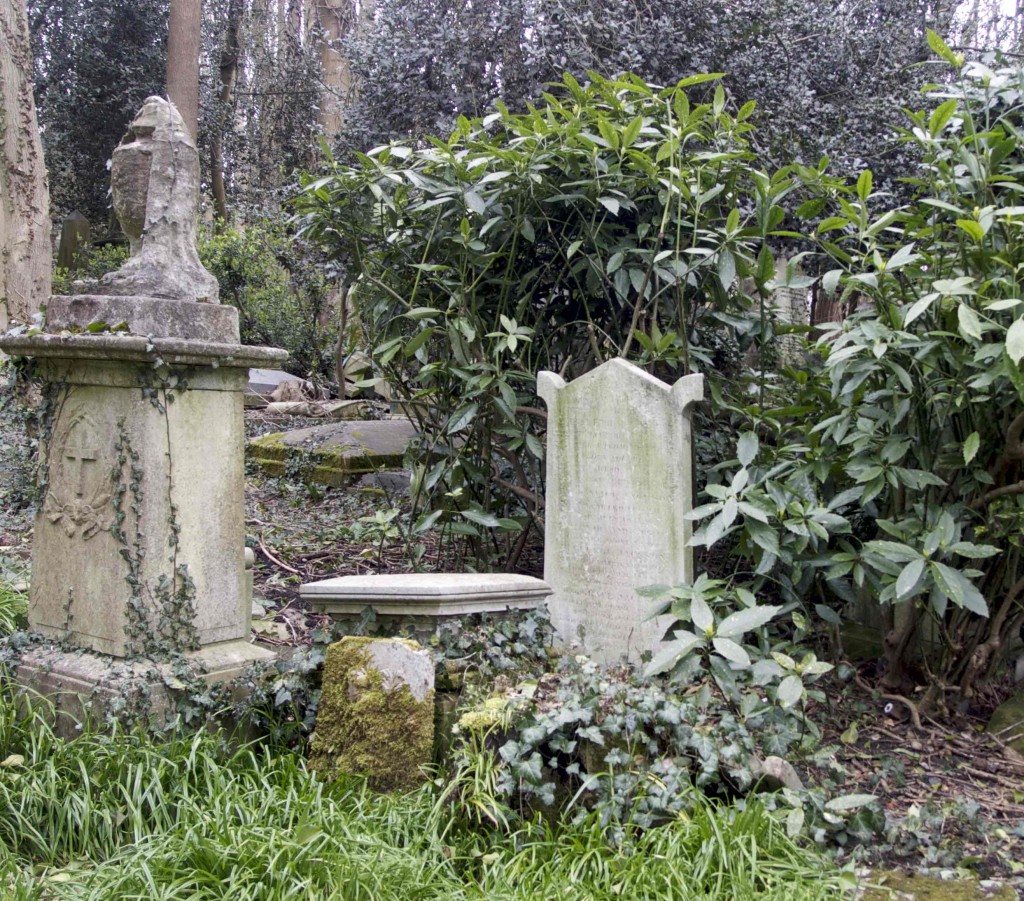
The white pointy grave is the Cemetery’s first resident, Elizabeth Jackson of Soho
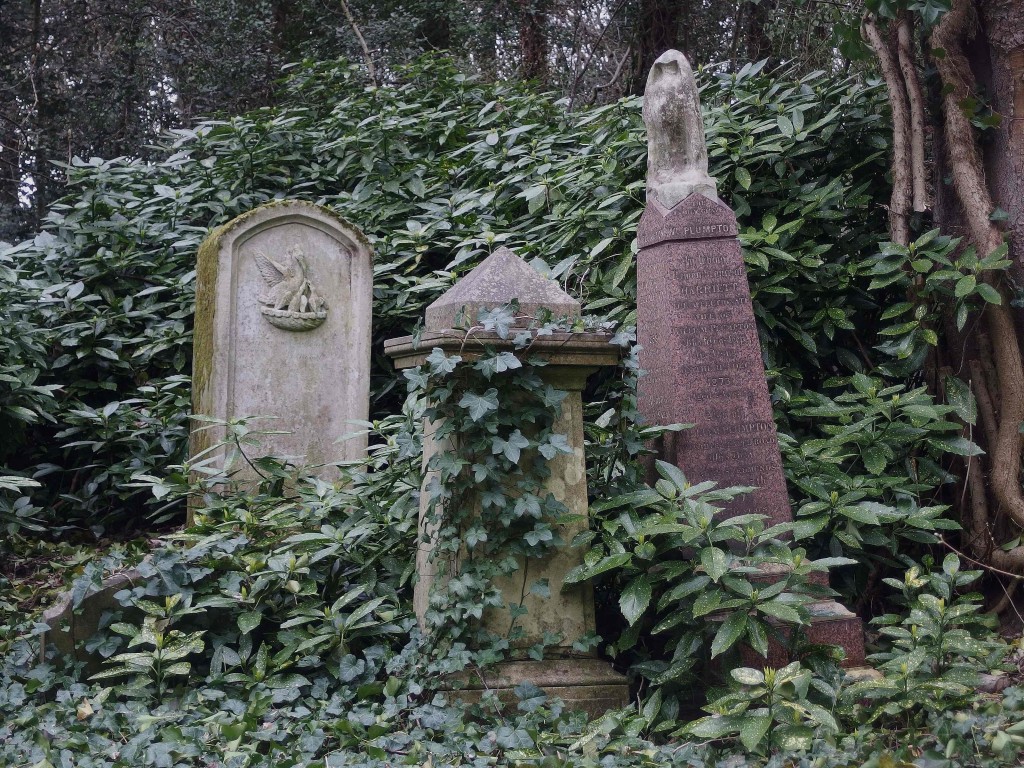
Sam kept our small group fascinated with explanations of the various symbols Victorians used to mark their graves, and with spooky tales of phenomena like the Highgate Vampire. In the 1960s, when the cemetery was very run down, young people would meet to observe “the occult”. Stories quickly spread of grey figures seen prowling the pathways, and even a King Vampire haunting the grounds. Looking around, it was easy to picture a lone figure in the distance, and we all walked a little closer together!
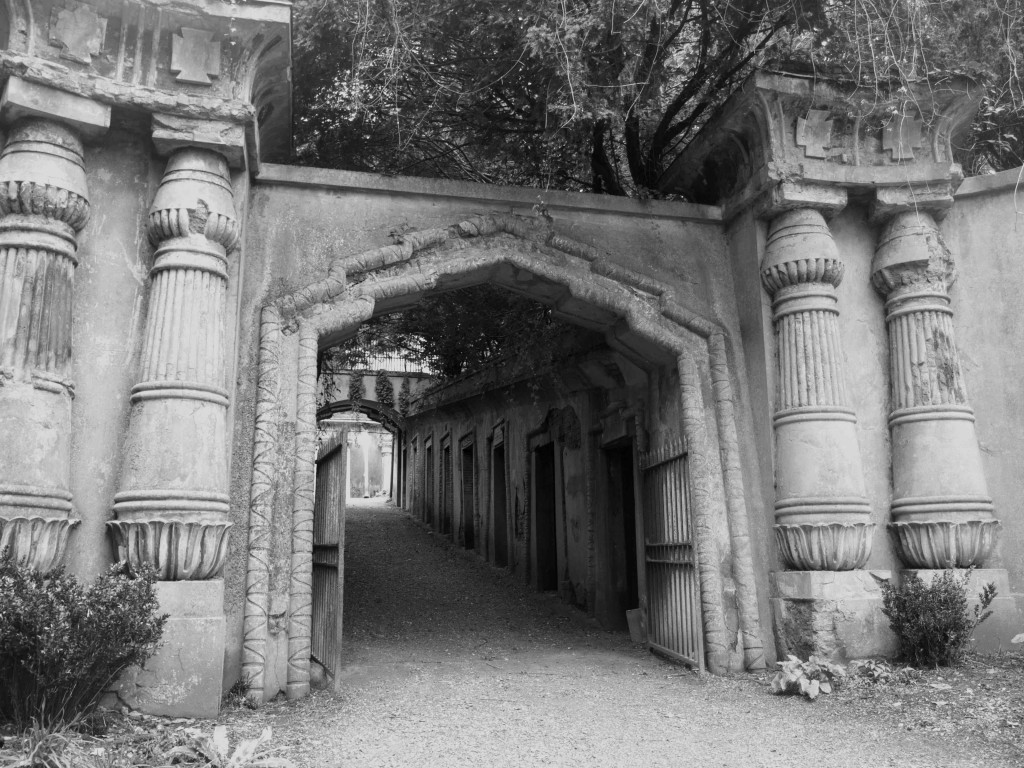
The entrance to the Egyptian Avenue
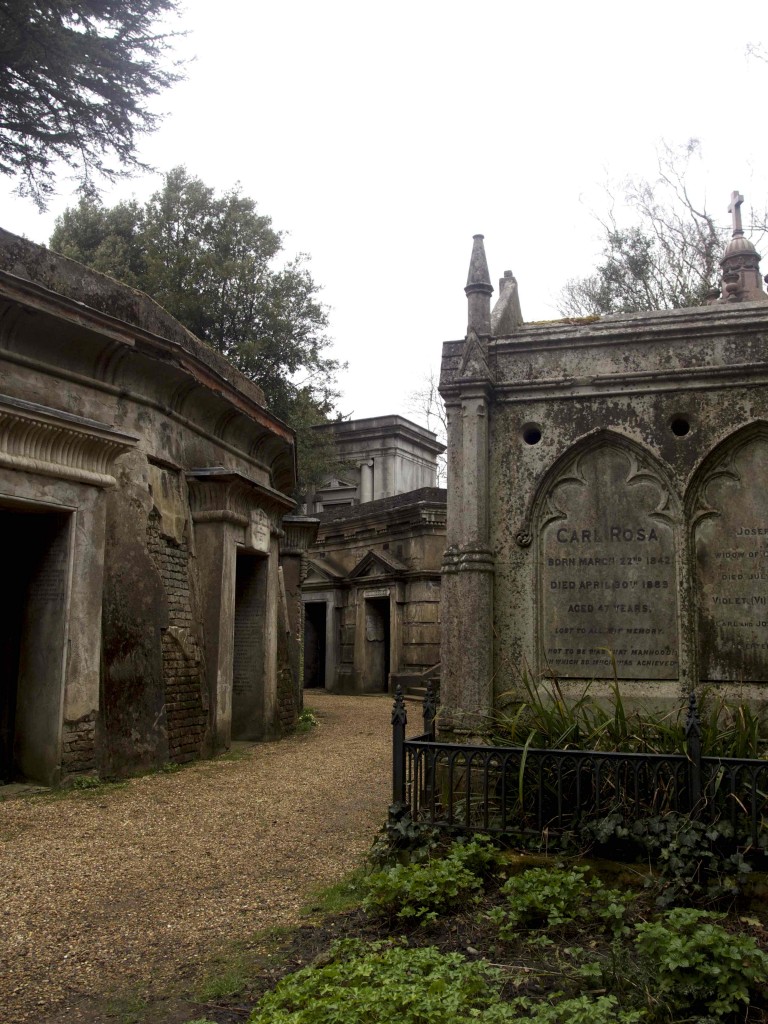
The Circle of Lebanon, with its many large family tombs
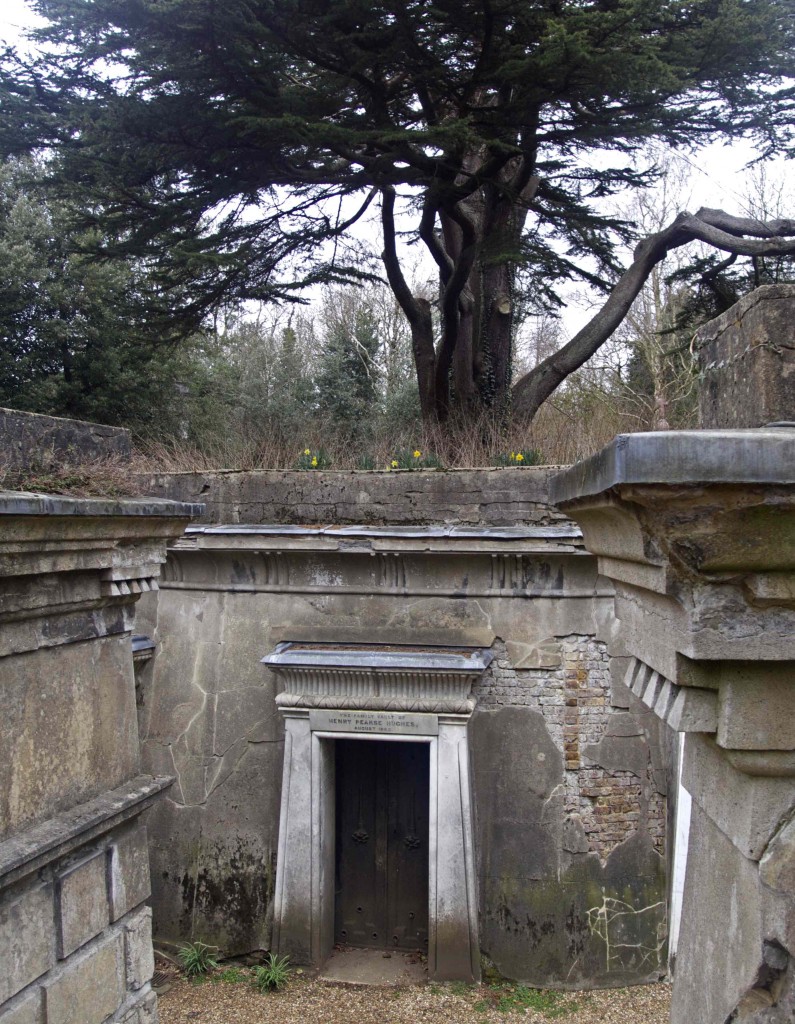
The centre of the cemetery is the Egyptian Avenue, leading to the Circle of Lebanon built around a spreading Cedar of Lebanon tree. Here there are many family tombs, in which the coffins would be laid on shelves over the years. The graves in Highgate were bought in perpetuity, meaning that these families will always reside here, even if their living descendants are no more. Sam led us into one of the tombs, which was creepy enough, before allowing us a peek into the terraced catacombs, where I genuinely got the shivers! Probably just a product of being in stone corridors underground, but I was more than happy to escape back out into the light.
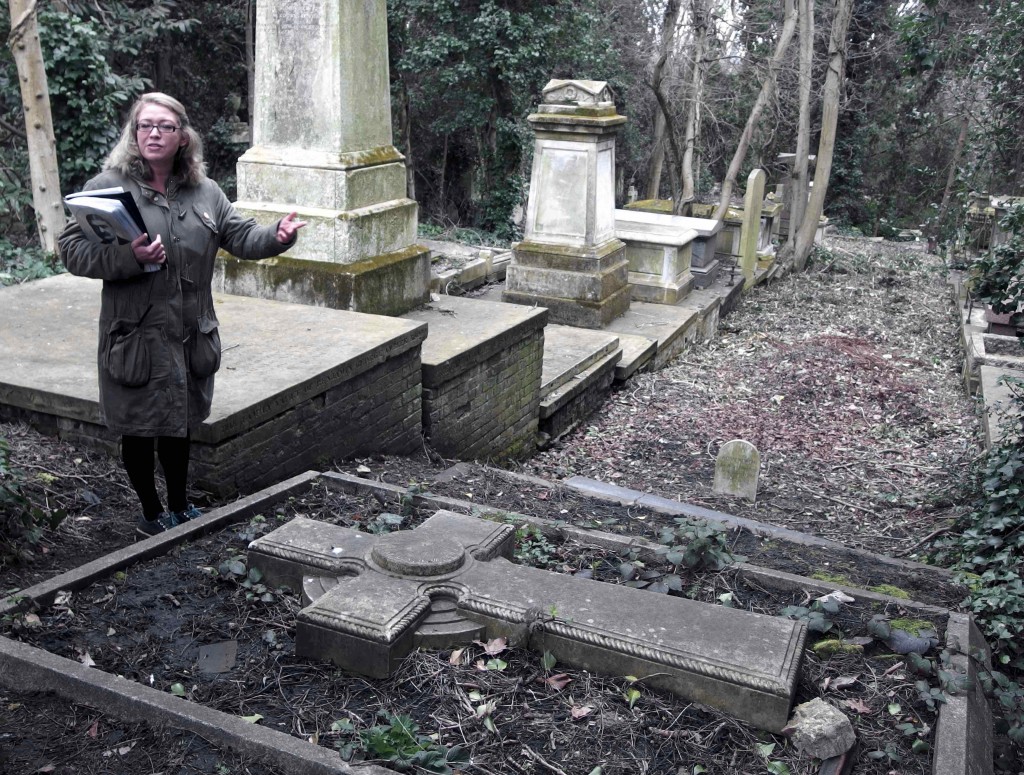
Sam tells the history of Adam Worth, aka Macavity
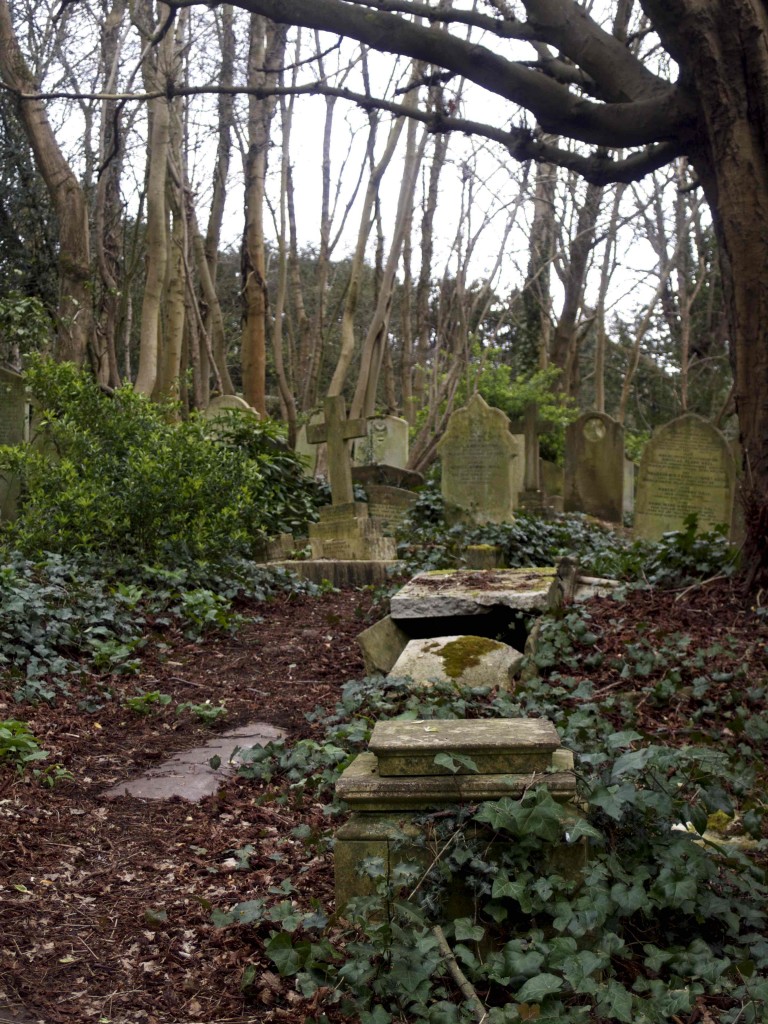
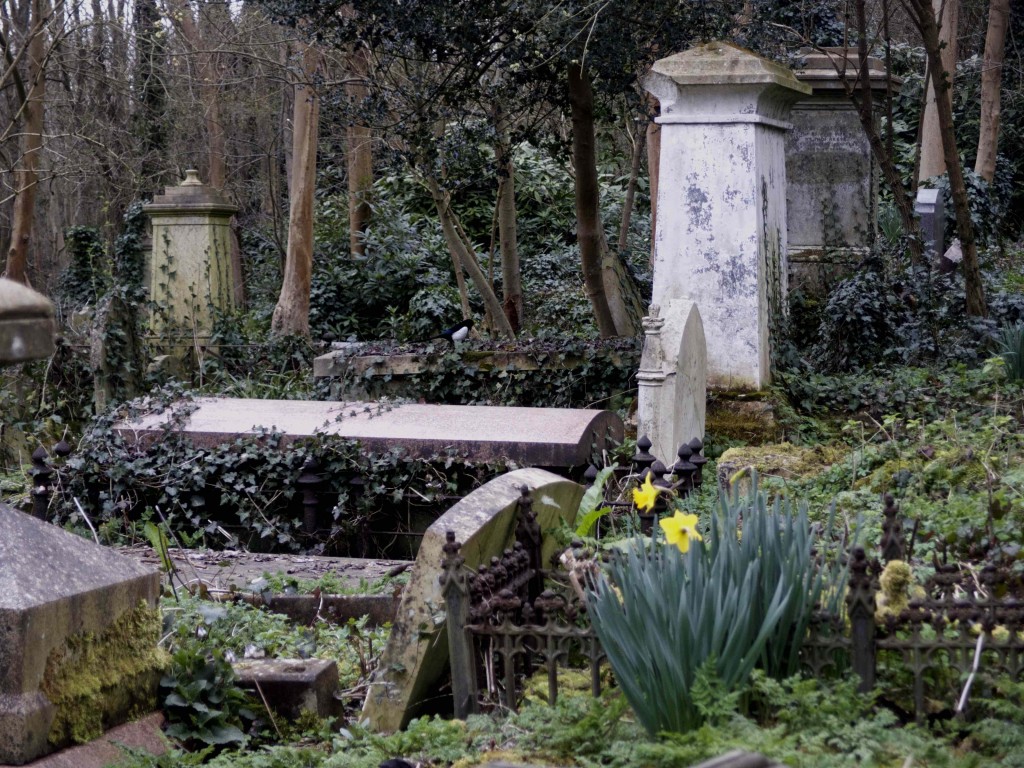
Spot the birdie
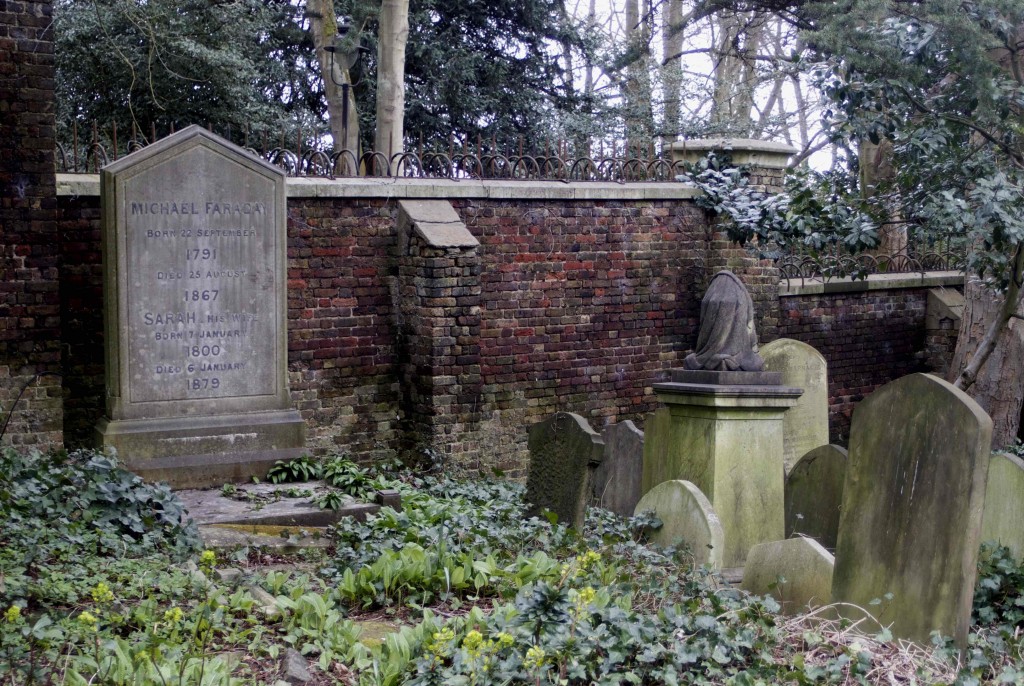
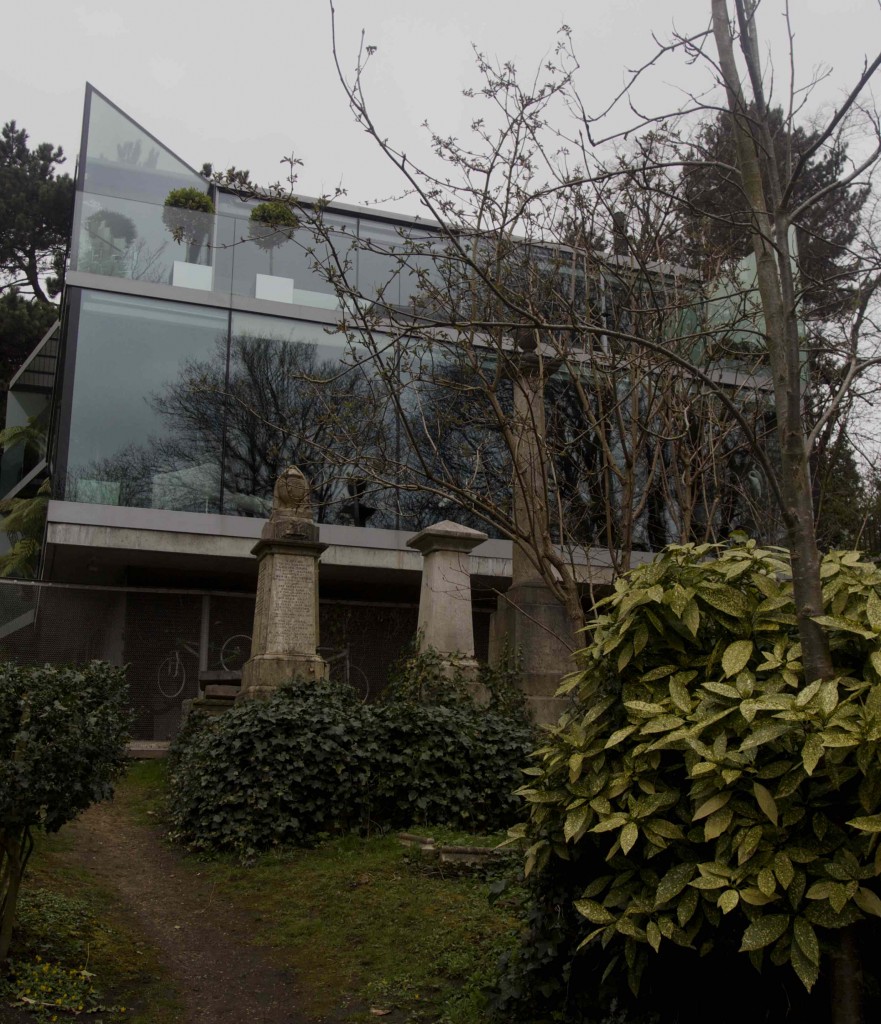
Once the site of the groundskeeper’s cottage, this glass house was built in 2009 and has won numerous awards. I wonder what the Victorian residents of the cemetery would think of it!
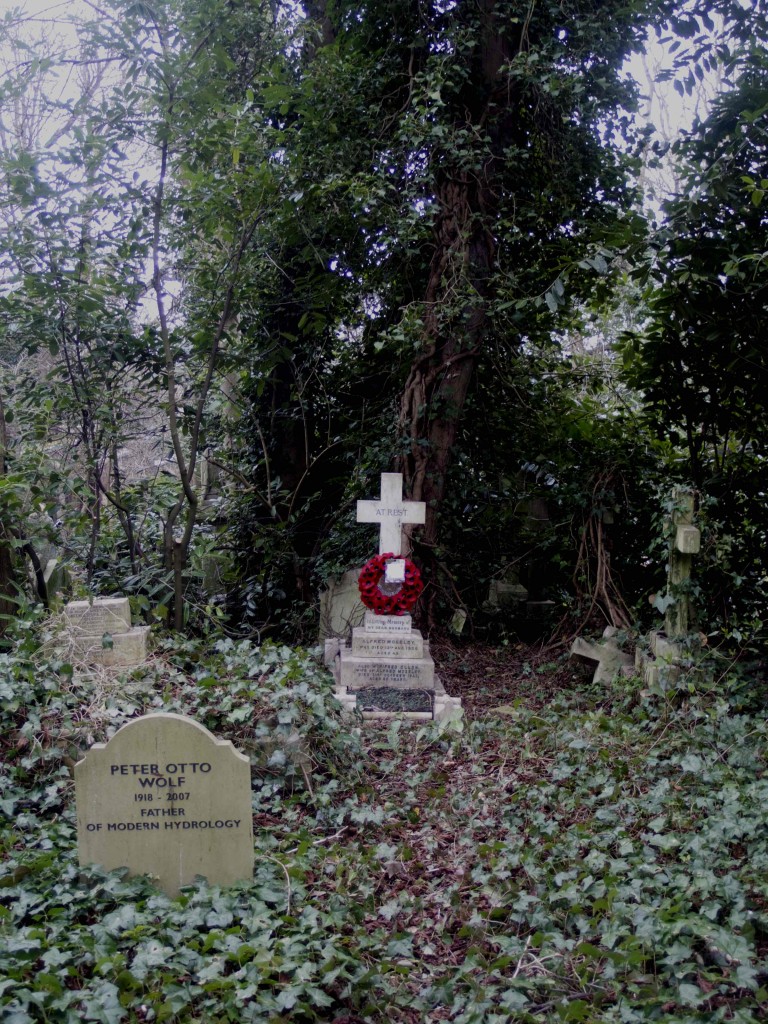
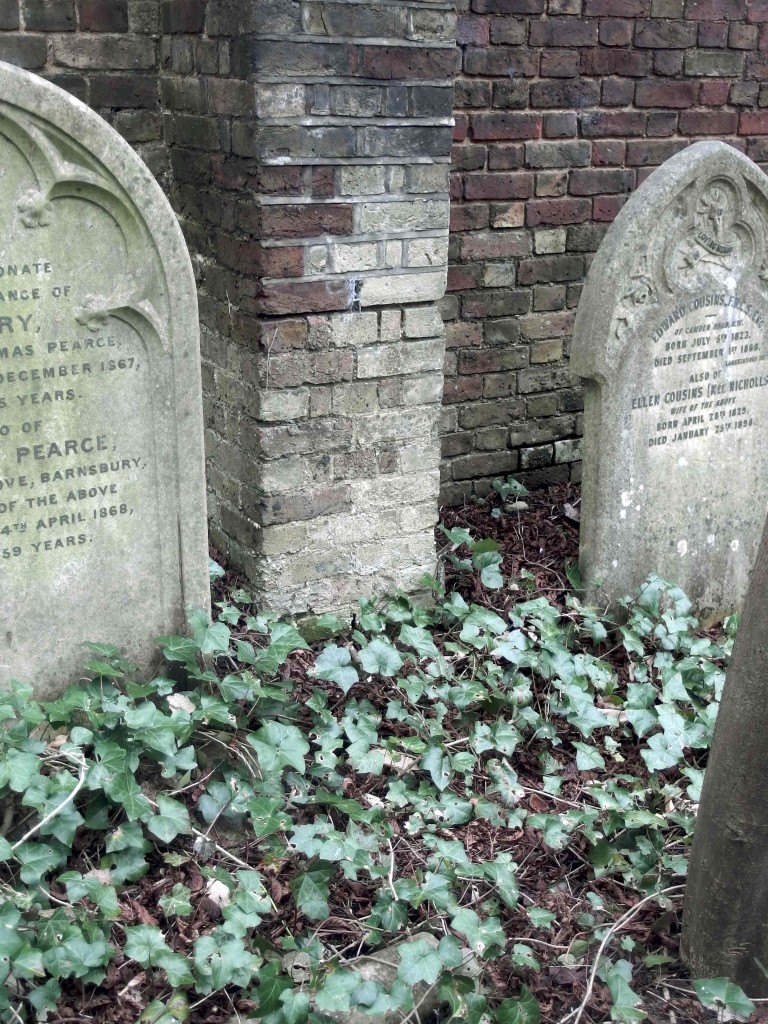
Sam told us the Friends of Highgate Cemetery are still discovering many stories about the graves in the cemetery that shed light on what life was like for its residents. This space between two headstones may not look like much, but is in fact the final resting place for ten Victorian prostitutes, who were aged from just fourteen. They had lived at a nearby women’s home and due to their profession were buried in this unmarked spot.
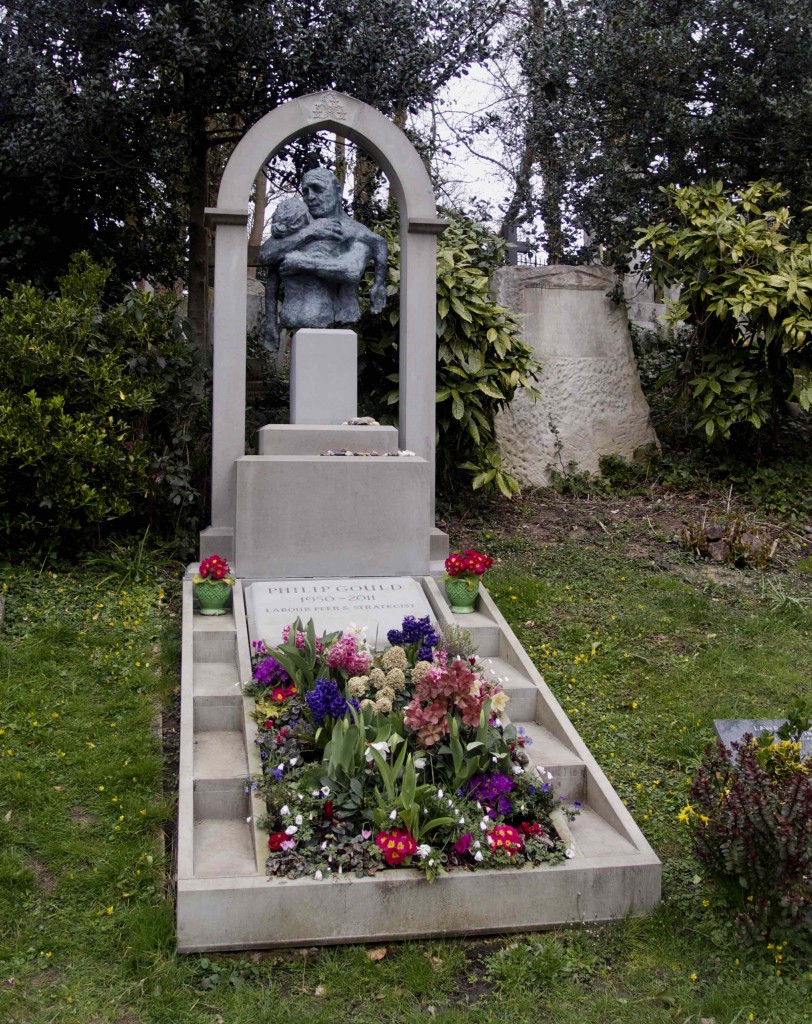
We thanked Sam and crossed the road into the East Cemetery, where we were free to wander and wonder about the lives summed up in brief snippets engraved on stone. The most famous resident of the East Cemetery is one Karl Marx, whose massive edifice was built after his death. It seems a little unfitting that the size of this monument means he is so easily distinguished from his common man!
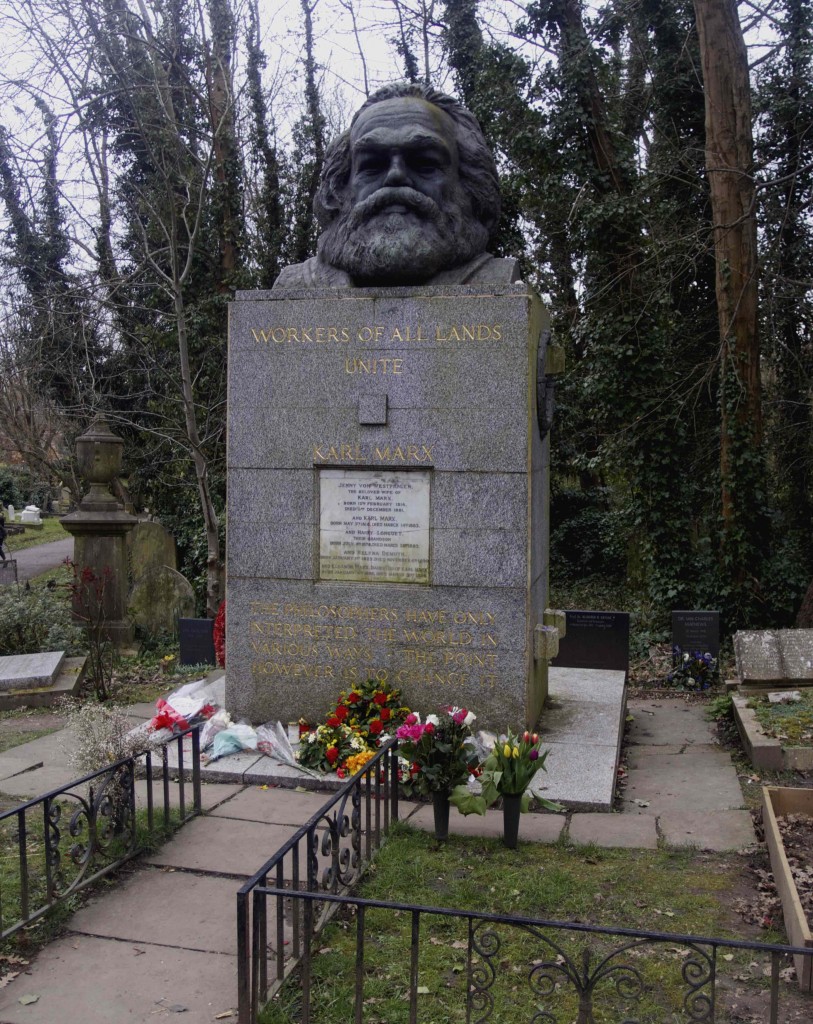
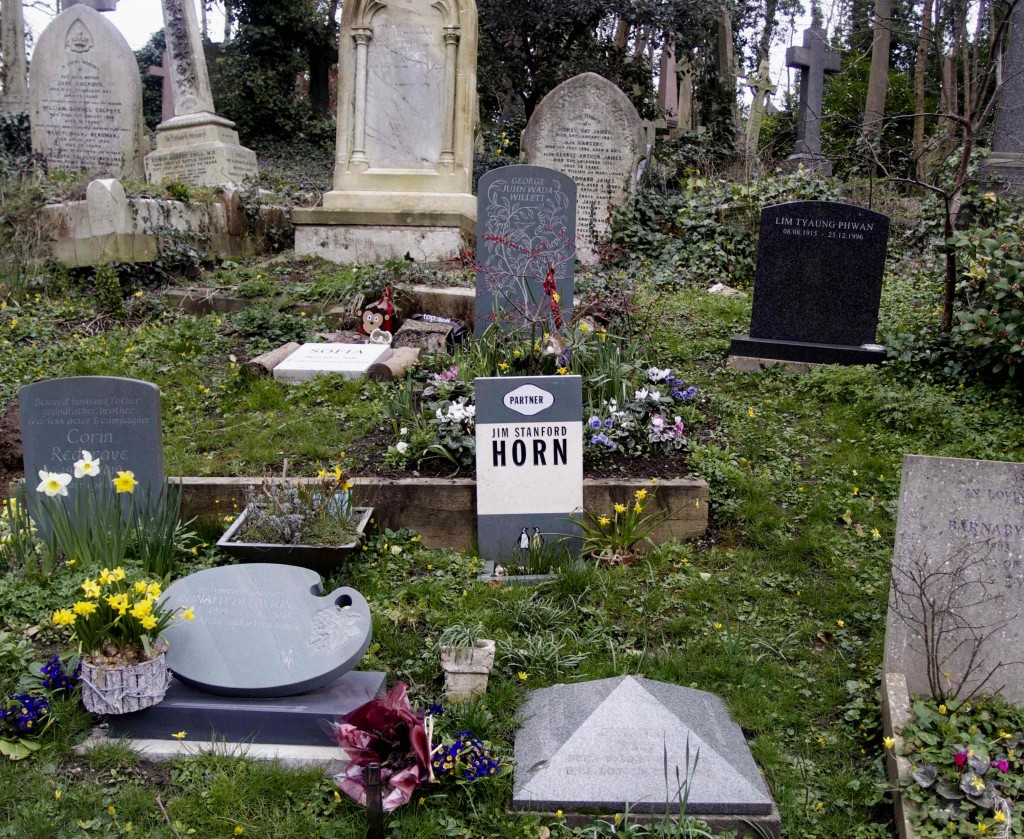
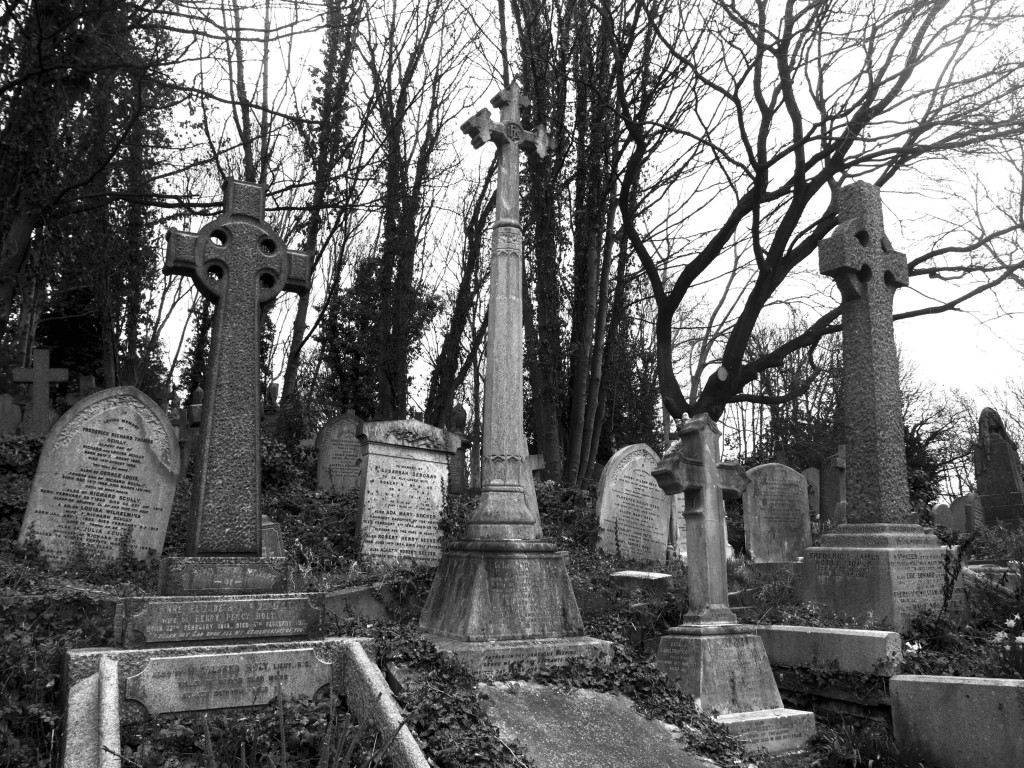
Treading softly on the paths of Highgate was a fascinating way to spend an afternoon – I learnt so much about life in the nineteenth century. Sam had a wealth of stories and I highly recommend taking the tour of the Western Cemetery – it’s the only way to see those super spooky catacombs!
For more information on visiting Highgate Cemetery, click here
While in Paris I visited the equally impressive Père Lachaise Cemetery, to read more click here
